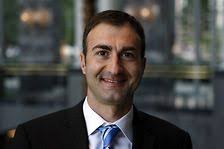
Eurex, the derivatives exchange owned by Deutsche Börse, said its environmental social and government futures could incorporate new methodologies this year after trading more than €10bn ($11.3bn) in notional last year.
Vassilis Vergotis, head of strategy and product design – equity, index and digital assets at Eurex, told Markets Media: “A further extension of our ESG segment this year will probably incorporate different methodologies that go beyond pure exclusions. From a timing perspective such new product introductions will take into account client demand and market adoption rates”
The latest addition to Eurex’s ESG future suite were launched this month with sustainable versions of MSCI benchmark indices covering USA, world, emerging markets, EAFE (Europe, Australasia and Far East or developed markets outside the US. & Canada ) and Japan.
“These are our first ESG contracts based on MSCI indices,” added Vergotis. “We have a suite of more than 120 futures based on MSCI indices, so it is a very strategic segment.”
Eurex said that trading in MSCI index-based derivatives is one of its fastest growing segments, as the share of client business driven by institutional investors has nearly doubled in the last two years to represent 27% of turnover. Total open interest is approximately 2.5 million contracts, which is the highest global MSCI index-based derivative-related open interest according to the exchange.
Eurex launches new futures using MSCI #ESG Screened Indexes covering USA, World, EM, EAFE and Japan. @EurexGroup #ESGDerivatives #trading #SustainableInvestment https://t.co/4AiEXlUOtR pic.twitter.com/FtUd36lzcI
— MSCI (@MSCI_Inc) March 2, 2020
Carolyn Weinberg, global head of products for ETF and index investments at BlackRock, said in a statement: “The new Eurex ESG futures reflect the growing demand for sustainable benchmarks on a global scale. The extension into derivatives is significant as sustainable indices are used as financial instruments.”
The MSCI ESG screened indexes follow a negative ESG screening or exclusions methodology, where certain controversial components are removed from a standard MSCI benchmark, for example weapons companies, tobacco manufacturers or companies deriving revenues from thermal coal.
“It will be a natural extension for the existing market makers to provide liquidity in the new contracts, but we expect to add several new ones as well,” said Vergotis. “They have just been approved by the US Securities and Exchange Commission so we will see US activity in the coming weeks.”
In the US the exchange launched another new ESG future last month, Eurex STOXX USA 500 ESG-X. The exchange said it was the first exchange-listed derivative that covers the US market while excluding thermal coal extraction and coal-fired power plants.
They grow up so fast: one year ago, we launched the first #futures on @STOXX’s European #ESG benchmark #indexes. ? Now, we look back on a successful first year – and just recently expanded our offering with new #STOXX® USA 500 ESG-X Futures. https://t.co/FcUip7r1Fu pic.twitter.com/WfemSh8eBh
— Eurex (@EurexGroup) February 18, 2020
Vergotis continued: “Our newly launched Eurex STOXX USA 500 ESG-X already has good on screen liquidity provided by two active market makers. We expect to see the first trades during the March roll.”
One-year anniversary
The new contracts complement Eurex’s previous ESG futures which were launched in February last year and mainly focused on European markets.
“With a three-digit growth rate, more than €10bn in notional was traded last year in our ESG segment,” added Vergotis. “We expect new regulatory mandates and the introduction of the European Union taxonomy later this year to provide further tailwind that will support continuous growth in our ESG segment.”
Magnus Linder, head of derivatives at Swedbank Robur which has more than €140bn in assets under management, said in a blog that the Scandinavian fund manager is not allowed to use non-sustainable financial products, including derivatives.
“Until only very recently, this created important tactical problems,” added Linder. “In managing ESG portfolios, one would run into liquidity constraints and tracking-error problem. With ESG futures you can be ‘fully ESG and fully invested,’ by holding 95% in an ESG basket and 5% in ESG futures.”
We caught up with @SwedbankRobur’s Head of Derivatives, Magnus Linder, to find out how a comprehensive suite of #ESG #derivatives helps a money manager with an established tradition of responsible investing. https://t.co/ob17A87QNo pic.twitter.com/NlHsxDLAVd
— Qontigo (@Qontigofinance) February 26, 2020
In addition, using futures is significantly cheaper than trading an ESG basket of stocks due to the accumulation of fixed fees and holding costs for every share purchased. Swedbank Robur was involved in the consultation fo the development of the ESG futures.
“In that sense, we are not surprised that the STOXX 600 ESG-X futures have gotten so much traction in only one year,” Linder added. “Trading in STOXX Europe 600 ESG-X futures amounted to a notional value of more than €5bn in December only. These days, large trading blocs of the ESG-X futures have spread costs that are only a little bit wider than those on benchmark STOXX Europe 600 Index futures.”






